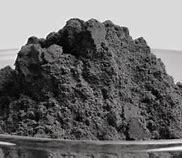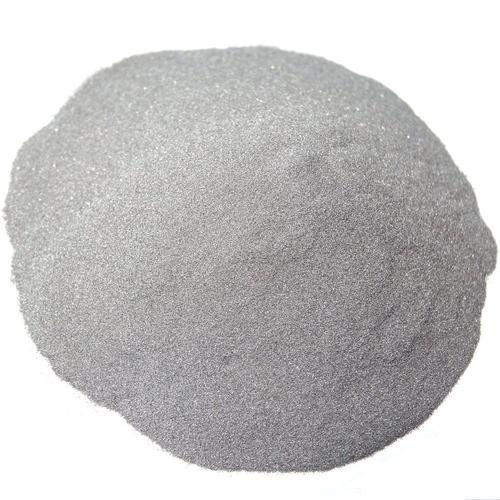1. Introduction
Just 24 hours ago, a major aerospace manufacturer announced a $45 million investment to scale up spherical titanium powder production for additive manufacturing—highlighting the surging global demand for high-performance metal powders. As industries from medical implants to defense ramp up adoption of 3D printing, understanding the nuances of titanium powder has never been more critical.

Whether you’re looking to buy titanium powder for prototyping, compare ti6al4v powder price fluctuations, or evaluate alternatives like molybdenum or tungsten powders, this guide breaks down the seven most important titanium powder types you need to know right now.
2. Pure Titanium Powder vs. Titanium Alloy Powder
Pure titanium powder (often Grade 1 or 2) offers excellent corrosion resistance and biocompatibility but lower strength. It’s commonly used in chemical processing and biomedical applications.
In contrast, titanium alloy powder—especially ti6al4v powder (also called ti64 powder)—dominates aerospace and medical sectors due to its superior strength-to-weight ratio. Ti6al4v powder price typically runs 20–30% higher than pure titanium powder price per kg because of added vanadium and aluminum.
- Pure titanium powder: ideal for non-structural uses
- Ti64 powder: go-to for load-bearing 3d printing parts
3. Production Methods: Gas Atomized vs. HDH Titanium Powder
Gas atomized titanium powder is spherical, flowable, and perfect for titanium powder additive manufacturing. Its smooth morphology ensures consistent layer deposition in laser powder bed fusion machines.
HDH (Hydride-Dehydride) titanium powder, on the other hand, is angular and cheaper—but less suitable for high-precision 3D printing. It’s often used in powder metallurgy or as a precursor for further processing.
Spherical titanium powder commands a premium: titanium 3d printing powder can cost $300–$600/kg, while HDH variants may be as low as $100–$200/kg depending on purity and supplier.

4. Specialty Titanium Powders: Beyond the Metal
Not all ‘titanium powders’ are metallic. Tio2 powder (titanium dioxide) is a white pigment used in sunscreens, paints, and even food—though unrelated to structural applications.
Other advanced variants include:
- Titanium nitride powder: ultra-hard, gold-colored coating material
- Titanium carbide powder: used in cutting tools and wear-resistant composites
- Titanium diboride powder (TiB2 powder): high-melting-point ceramic for armor and electrodes
- Titanium boride powder: similar applications but different stoichiometry
These ceramics serve entirely different markets than titanium metal powder, so always verify composition before purchasing.
5. Titanium Powder for 3D Printing: What Buyers Need to Know
Demand for titanium powder for 3d printing continues to outpace supply, pushing titanium powder for 3d printing price upward in Q2 2024. Reputable suppliers now emphasize traceability, oxygen content (<1000 ppm), and particle size distribution (typically 15–45 µm).
When you buy titanium powder for additive manufacturing, ensure it’s certified for your specific printer type. Recycled or off-spec powder may lead to porosity or failed builds.
International titanium powder suppliers like AP&C, Carpenter Additive, and TLS Technik dominate the high-end market, though Chinese producers are gaining ground with competitive ti powder price points.

6. How Titanium Powder Compares to Molybdenum and Tungsten Powders
While titanium excels in lightweight strength, engineers sometimes consider molybdenum powder or tungsten powder for extreme heat or density requirements.
Molybdenum metal powder (including tzm powder and molybdenum disulfide powder) is used in furnace components and lubricants. Moly disulfide powder uses span aerospace to automotive, with mos2 powder price ranging $50–$150/kg.
Tungsten powder, especially spherical tungsten powder or tungsten carbide powder, offers unmatched density (19.3 g/cm³) and wear resistance. Tungsten powder price per kg starts around $40 for technical grade but can exceed $300 for high-purity variants.
Unlike reactive titanium dust, both moly and tungsten powders are more stable—but heavier and harder to process via standard 3D printing.
7. Pricing, Safety, and Where to Buy
Titanium powder cost varies wildly based on form, purity, and volume. Expect to pay:
- $80–$200/kg for HDH pure titanium powder
- $300–$800/kg for gas atomized ti6al4v powder
- Over $1,000/kg for nano or specialty grades like titanium nanopowder
Always source from a trusted titanium powder supplier with ISO certifications. Beware of ‘titanium flash powder’ or burnt titanium powder coat scams—these aren’t industrial-grade materials.
Note: Titanium powder is flammable and can be pyrophoric in fine forms. Store under argon and avoid contact with water or oxidizers.
8. Conclusion
From pure titanium powder to complex alloys like ti64 and ceramic derivatives like tio2 nano powder, the titanium powder landscape is vast and rapidly evolving. With 3D printing driving innovation and prices fluctuating due to raw material constraints, staying informed on types, suppliers, and alternatives like molybdenum or tungsten powders is essential for smart procurement in 2024.
Our Website founded on October 17, 2012, is a high-tech enterprise committed to the research and development, production, processing, sales and technical services of ceramic relative materials such as 7. Our products includes but not limited to Boron Carbide Ceramic Products, Boron Nitride Ceramic Products, Silicon Carbide Ceramic Products, Silicon Nitride Ceramic Products, Zirconium Dioxide Ceramic Products, etc. If you are interested, please feel free to contact us.
